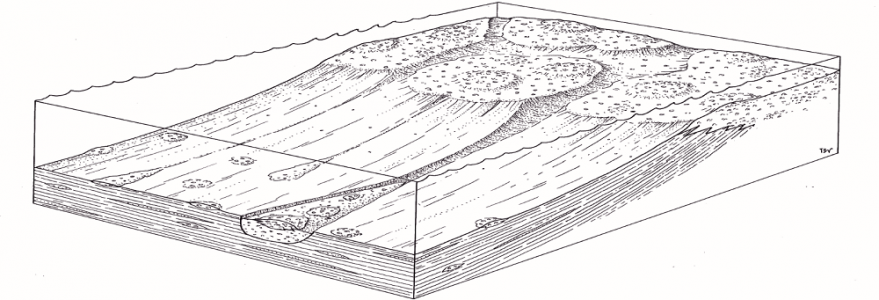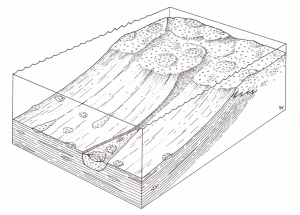A team of scientists from the UW’s Faculty of Geology studied the oldest found so far reefs of the mesophotic zone on Gotland. As a result of the analysis, a large erosion channel was discovered, which was a sedimentary structure connecting the more shallow and deeper parts of the sea basin.
Reefs exist on Earth for hundreds of millions of years. The most common and best known reefs, both modern and fossil, are the shallow water coral reefs of warm seas. However, during the geological history, the reef ecosystems occurred in a very wide variety, as both the constituting organisms and the inhabited environments have constantly changed.
Recently, scientists have discovered that one of the environments, in which reefs commonly occur, is the mesophotic zone, also known as the twilight zone, located usually at the depths of 30-150 meters. This is a depth interval with a very limited penetration of water by light, which enforces some peculiar and characteristic ecological adaptations of the organisms that inhibit it. The oldest found so far reefs of the mesophotic zone, constructed mainly by corals and stromatoporoids (an extinct group of sponges with a calcareous skeleton), are known from the early Silurian deposits of Gotland, dating ca. 430 millions of years, which has been described by a team led by Prof. Mikołaj Zapalski from the Faculty of Geology, the University of Warsaw.
Erosion channel connecting shallow and deeper environments
After the discovery of the oldest mesophotic reefs, researchers have raised the following question: how did the reefs establish for the first time? In other words, where did the organisms inhabiting the twilight zone come from, and how did they settle there? One of the hypothesis assumed gradual colonization of the sea bottom towards increasing depths, the other was that the seas of that time suddenly became deeper.
A team of scientists from the UW’s Faculty of Geology, led by Prof. Piotr Łuczyński, resumed the studies of the Silurian deposits outcropping on Gotland and discovered a sedimentary structure connecting the more shallow and deeper parts of the sea basin.
“It is a large erosional channel, which provided a way of transport for sediments, but also for organisms inhabiting the sea bottom, such as corals and stromatoporoids, or their larvae, from the shallows to the deeper parts of the basin, probably during storms or tsunami surges. Some of the living animals transported in this way into deeper waters could survive and give rise to mesophotic reefs,” Prof. Piotr Łuczyński says.
The research results shed a new light on how the process of colonisation of the twilight zone might have happened. Structures, such as the discovered channel, probably occurred along the slopes of shallow water areas also in other parts of the world, constituting a connection between the shallow water and mesophotic ecosystems.




